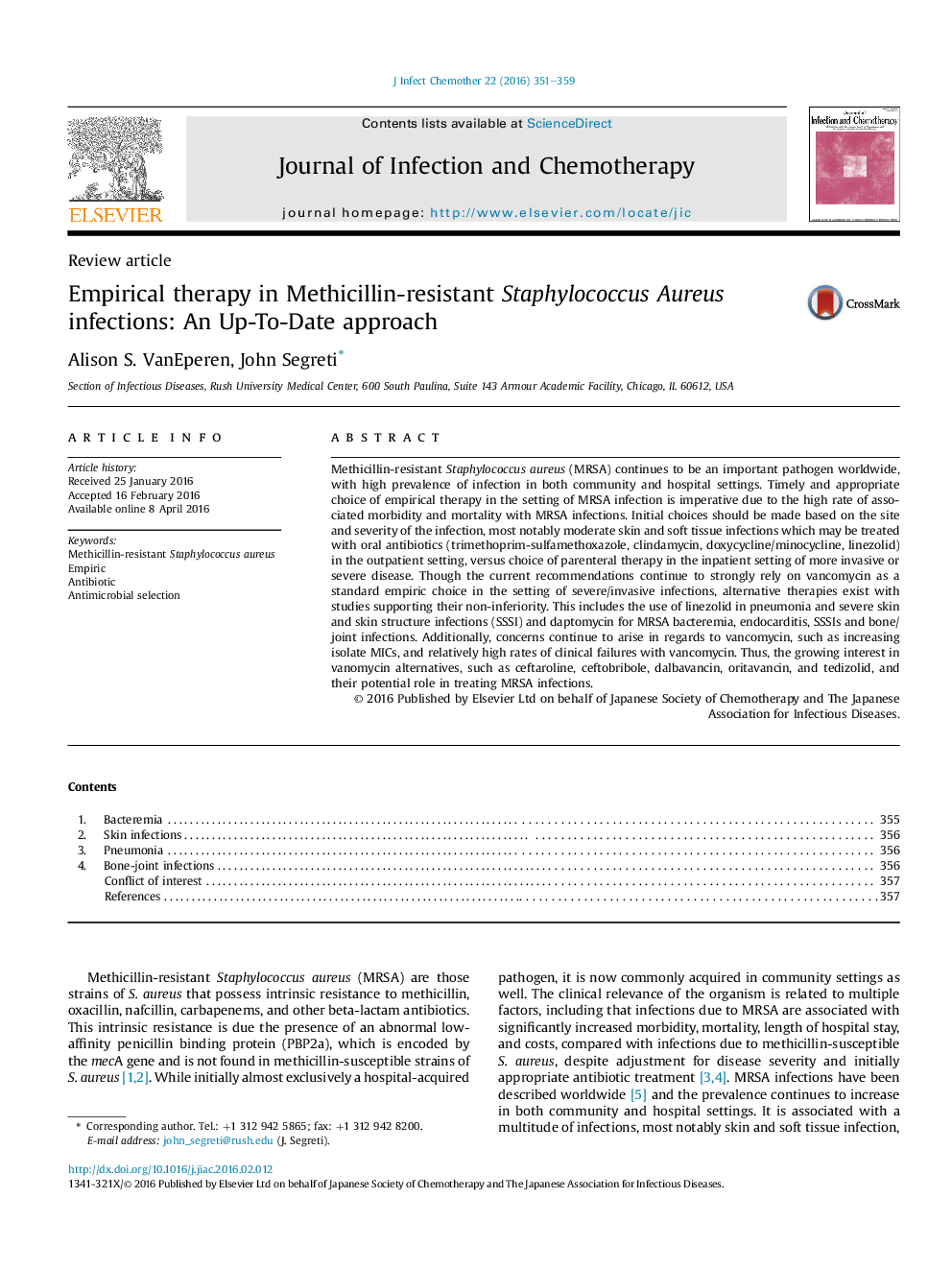| Article ID | Journal | Published Year | Pages | File Type |
|---|---|---|---|---|
| 3376620 | Journal of Infection and Chemotherapy | 2016 | 9 Pages |
Methicillin-resistant Staphylococcus aureus (MRSA) continues to be an important pathogen worldwide, with high prevalence of infection in both community and hospital settings. Timely and appropriate choice of empirical therapy in the setting of MRSA infection is imperative due to the high rate of associated morbidity and mortality with MRSA infections. Initial choices should be made based on the site and severity of the infection, most notably moderate skin and soft tissue infections which may be treated with oral antibiotics (trimethoprim-sulfamethoxazole, clindamycin, doxycycline/minocycline, linezolid) in the outpatient setting, versus choice of parenteral therapy in the inpatient setting of more invasive or severe disease. Though the current recommendations continue to strongly rely on vancomycin as a standard empiric choice in the setting of severe/invasive infections, alternative therapies exist with studies supporting their non-inferiority. This includes the use of linezolid in pneumonia and severe skin and skin structure infections (SSSI) and daptomycin for MRSA bacteremia, endocarditis, SSSIs and bone/joint infections. Additionally, concerns continue to arise in regards to vancomycin, such as increasing isolate MICs, and relatively high rates of clinical failures with vancomycin. Thus, the growing interest in vanomycin alternatives, such as ceftaroline, ceftobribole, dalbavancin, oritavancin, and tedizolid, and their potential role in treating MRSA infections.
